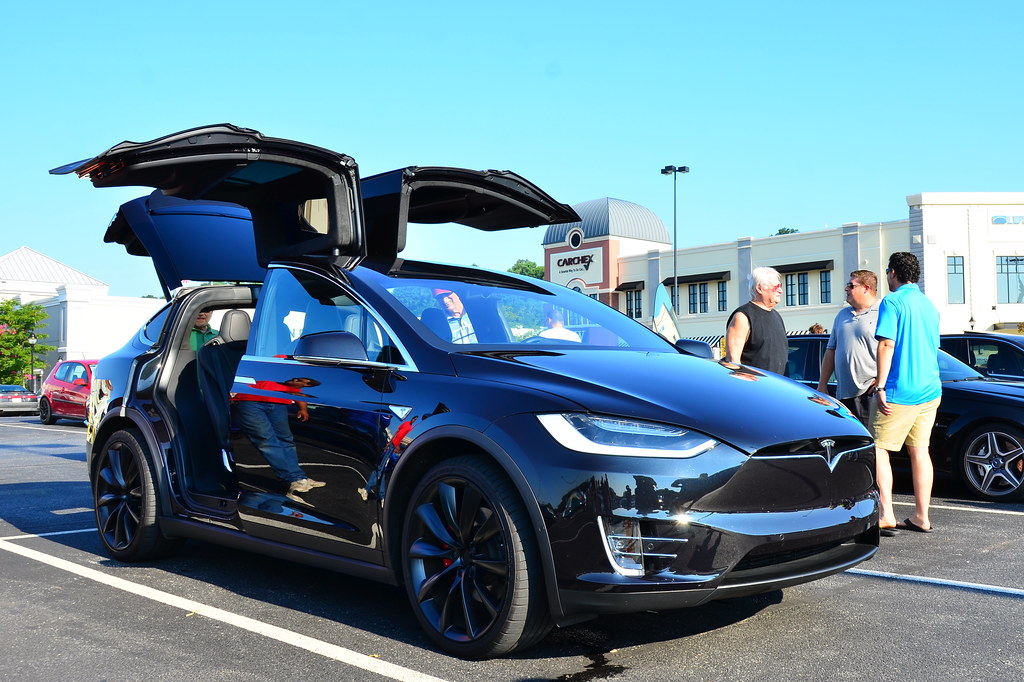
Car insurance is a significant ongoing expense for nearly every driver across the United States, with annual premiums varying dramatically from state to state, and even by ZIP code. Understanding these differences is crucial for motorists seeking to manage their budgets effectively, especially when considering a move or simply evaluating their current costs. Factors ranging from local legal requirements and traffic congestion to weather patterns and the prevalence of fraud can all play a role in shaping the financial landscape of auto insurance.
Our comprehensive analysis, built upon extensive in-house research and data collection, aims to provide an unbiased look at where drivers can find the most affordable car insurance rates. We delve into specific states that consistently rank lower in average annual premiums, examining not only the costs but also the underlying reasons that contribute to these advantageous rates. This data-driven approach ensures accuracy and credibility, helping consumers make informed decisions.
By highlighting these states, we intend to offer practical insights into where the combination of lower insurance costs and, by inference, often safer driving environments—characterized by reduced accident frequency, theft, and vandalism—can make a substantial difference for drivers. Join us as we explore the top contenders for economical auto insurance, backed by detailed statistics and expert observations.

1. **Maine**Maine consistently stands out as a leader in affordable auto insurance, offering its residents some of the nation’s lowest average annual rates. According to our study, the average annual car insurance rate for Maine drivers is a remarkably low $949. This figure significantly undercuts the national average, making Maine an attractive state for those prioritizing cost-effective vehicle coverage. The presence of competitive insurers also plays a role in maintaining these low rates.
For instance, Auto-Owners Insurance has been identified as having one of the cheapest sample rates in Maine, averaging $620 per year. Other companies like Travelers and State Farm also offer competitive pricing, with average annual rates of $786 and $912, respectively. This strong competition among insurers benefits consumers directly, as companies vie for business by offering more budget-friendly policies.
The state’s lower population density, relative to many other U.S. regions, often translates into less traffic congestion and a reduced incidence of accidents, theft, and vandalism. These factors are directly considered by insurers when calculating premiums, contributing to Maine’s advantageous position. Geoff Cudd, a consumer advocate and owner of FindTheBestCarPrice.com, notes that “states with milder weather and rural areas pay cheaper car insurance rates,” and Maine often fits this description for much of its geography, further supporting its lower rates.
Furthermore, “Vermont, New Hampshire and Maine have the cheapest car insurance rates,” as stated by CarInsurance.com insights. This regional trend underscores the broader environmental and demographic characteristics that favor lower insurance costs in the New England area. For drivers seeking significant savings, Maine presents a compelling case as a top-tier option.
Read more about: 14 Unlikely Automotive Heroes: The Cars That Shocked Everyone and Redefined Success

2. **Idaho**Following closely on the heels of Maine, Idaho ranks as another highly affordable state for car insurance, boasting an average annual rate of $992. This makes it the second cheapest state in our analysis, offering a substantial contrast to states with much higher premiums like Louisiana. The consistently low rates in Idaho are a testament to a combination of favorable state characteristics and a competitive insurance market.
Our research indicates that State Farm often provides one of the lowest average rates in Idaho, with a sample rate of $637 per year. Other insurers such as USAA also offer attractive options for eligible drivers. The availability of multiple companies offering competitive rates ensures that Idaho residents have ample opportunity to shop around and secure the best possible coverage at an economical price.
Idaho’s relatively lower population density and predominantly rural landscape contribute significantly to its lower insurance costs. Less congested roads and generally milder weather conditions in many parts of the state lead to fewer claims related to accidents and severe weather events. Mark Friedlander, director of corporate communications for the Insurance Information Institute, highlights that “drivers in more sparsely-populated states such as Idaho and North Dakota are going to pay much less for coverage.”
This geographical advantage, combined with a lower frequency of claims, helps keep premiums down for all drivers within the state. For those looking to minimize their annual insurance outlay without compromising on essential coverage, Idaho represents an excellent choice.
Read more about: From Street Takeovers to Uninsured Nightmares: The Wildest Automotive Hits You Won’t Believe

3. **Vermont**Vermont solidifies its position as one of the most cost-effective states for car insurance, with an average annual rate of $1,053. This impressive affordability places it among the top three states where drivers can expect to pay significantly less for their auto policies. The state’s unique blend of characteristics contributes to these attractive rates, making it a desirable location for budget-conscious motorists.
While USAA offers the lowest sample rate in our study at $705 per year, it is important to remember that their services are exclusive to current and former military members and their families. For the majority of drivers, Auto-Owners Insurance provides a highly competitive alternative, with an average annual rate of $784, making it a leading choice for affordable coverage in Vermont. This competitive landscape is crucial for maintaining low prices.
Lauren McKenzie, an insurance broker at A Plus Insurance, suggests that “states that have the lowest overall car insurance premiums on average may have lower populations, which result in fewer car accidents and less money paid out by insurance companies.” Vermont, with its lower population density and predominantly rural settings, aligns perfectly with this observation, experiencing fewer traffic-related incidents and claims.
The stable insurance environment in Vermont, characterized by lower accident rates and less exposure to high-cost claims, translates directly into savings for consumers. As one of the states explicitly mentioned for its cheapest rates by CarInsurance.com Insights, Vermont offers a clear advantage for drivers seeking reliable yet inexpensive auto insurance.
Read more about: Seriously, Where Did They Go? Unearthing 15 Classic Sports Leagues That Vanished From Our Screens

4. **Ohio**Ohio stands out as a Midwestern haven for affordable car insurance, with an average annual rate of $1,083 according to our analysis. This places the Buckeye State firmly among the top cheapest states nationwide, offering considerable savings compared to the national average and significantly more expensive states. The blend of a substantial population with manageable insurance risks allows for these favorable rates.
Our research found that Grange offers one of the cheapest sample rates for Ohio drivers, averaging $720 per year. Other reputable insurers like USAA and Erie Insurance also present competitive options, helping to ensure that Ohioans have a variety of choices for economical coverage. This robust market competition is a key ingredient in keeping premiums accessible for residents.
States with a healthy level of competition among insurance providers generally see lower annual average car insurance rates. Ohio’s insurance market benefits from this dynamic, as multiple firms actively compete for customers. This competitive environment, coupled with the state’s diverse geography that includes both urban centers and expansive rural areas, helps to balance the overall risk profile.
While Ohio does have major metropolitan areas, the overall risk environment, including factors like traffic congestion, severe weather claims, and fraud, appears to be managed in a way that prevents rates from escalating excessively. This careful balance makes Ohio an appealing destination for those seeking reliable and affordable auto insurance.
Read more about: Beyond the Script: 10 WWE Confrontations Where Real-Life Hatred Fueled Unforgettable Rivalries

5. **Wisconsin**Wisconsin presents a compelling case for affordable car insurance, with a statewide average rate of $1,145 per year. This positions the state among the top tier of locations where drivers can secure comprehensive coverage without incurring exorbitant costs. The unique characteristics of Wisconsin’s driving environment contribute to its capacity for lower premiums.
For those eligible, USAA offers the cheapest sample rate in our study of Wisconsin auto insurers at $730. However, for most drivers, Geico emerges as a leading choice for affordability, with an average annual rate of $857. The presence of such competitive options empowers Wisconsin residents to shop diligently and find policies that align with their financial needs.
Lauren McKenzie, an insurance broker, points out that states with lower populations can see fewer accidents and thus less money paid out by insurance companies, resulting in cheaper premiums. While Wisconsin is not a sparsely populated state, its careful management of road infrastructure, combined with a driving culture that contributes to a lower accident frequency in many areas, plays a role in these rates.
The state’s overall risk profile, including factors like crime rates and weather-related claims, is evidently more favorable than in many other parts of the country. This translates into tangible savings for policyholders, making Wisconsin a noteworthy inclusion in our list of states with the cheapest car insurance.
Read more about: Consumer Alert: Unmasking the 13 Car Dealership Scams That Cost Buyers Thousands

6. **North Carolina**North Carolina rounds out our initial selection of states with exceptionally low car insurance rates, boasting an average annual rate of $1,165. This attractive pricing makes the Tar Heel State a desirable location for drivers looking to economize on their vehicle expenses without sacrificing necessary protection. Its balanced risk environment contributes significantly to these favorable conditions.
Erie Insurance stands out with the cheapest average annual rate in North Carolina, at $770 per year, according to our data. Other providers, including North Carolina Farm Bureau and Nationwide, also offer a range of policies. The availability of diverse insurance options and competitive pricing structures means that residents have ample opportunities to compare and select the most suitable plan.
North Carolina’s strategic approach to insurance regulation and its geographical characteristics play a role in maintaining these lower rates. The state has a mix of urban and rural areas, and while traffic congestion exists in major cities, the overall accident and claims frequency across the state remains relatively controlled. This contributes to a more stable insurance market.
It’s also worth noting that “North Carolina (4.3%)” experienced one of the lowest average effective rate increases in 2023, indicating a degree of stability in its insurance market compared to other states facing more rapid escalations. This stability further underscores its appeal for drivers seeking predictable and affordable car insurance costs.
Continuing our journey through the states where your car insurance won’t break the bank, we now turn our attention to additional locations that consistently deliver economic value. Understanding these specific state profiles, alongside the broader economic and regulatory forces at play, empowers drivers to make more informed decisions about their coverage. Our goal remains to arm you with reliable, data-backed information, shedding light on the complexities of auto insurance rates and how you can navigate them effectively.
Read more about: Lights, Camera, Silence: 12 Famous Duos Who Said ‘Cut!’ to Friendship After Filming Wrapped

7. **Indiana**Indiana emerges as another strong contender for affordable car insurance, with drivers benefiting from an average annual rate of $1,190 according to our research. This favorable pricing places the Hoosier State firmly among the nation’s most cost-effective regions for vehicle coverage. Such rates are a welcome relief, especially when compared to states with significantly higher premiums.
For eligible policyholders, USAA offers an exceptionally low sample rate of $677 per year, making it the cheapest option identified in our study for Indiana drivers. However, for the majority of motorists not affiliated with the military, Geico presents a highly competitive and accessible alternative, with an average annual rate of $877. This robust competition helps keep prices in check for all residents.
Indiana’s insurance market is characterized by a healthy balance of urban centers and more rural expanses, which collectively contribute to a manageable risk profile for insurers. This blend, coupled with a proactive approach to road safety and a generally stable claims environment, helps to prevent rapid escalations in insurance costs. The state’s demographic spread often translates into less widespread traffic congestion than in more densely populated areas.
The presence of multiple reputable insurers, actively vying for customers, ensures that Indiana residents have the flexibility to compare offerings and secure policies that align with their budgetary needs. This competitive dynamic is a cornerstone of the state’s consistent ability to offer notably lower premiums, solidifying its position as a go-to for budget-conscious drivers.
Read more about: The $15.8 Million Presidential Custom Fleet: A Deep Dive into High-Security Transportation and Campaign Operations

8. **Iowa**Our comprehensive rate study identifies Iowa as another prime location for economical car insurance, where the average annual rate stands at $1,215. This attractive figure positions the Hawkeye State among the leading regions for drivers seeking to minimize their insurance expenditures without compromising on essential coverage. Iowa’s relatively stable driving environment is a key factor here.
When it comes to finding the cheapest sample rates in Iowa, State Farm stands out with an average annual rate of $780 per year. The market also includes other strong contenders like West Bend Mutual and USAA, offering a variety of competitive options. Such a diverse landscape of insurers means that residents have ample choice, driving down prices through healthy competition.
The state’s predominantly rural geography and lower population density play a significant role in its ability to maintain these affordable rates. Fewer vehicles on the road generally translate into reduced traffic congestion and, consequently, a lower frequency of accidents, theft, and vandalism. These factors are directly reflected in the premium calculations by insurance companies, benefiting Iowa drivers.
Furthermore, Iowa’s risk profile benefits from a generally milder climate compared to some other states prone to extreme weather events, which can lead to costly claims. This combination of geographic advantages and a competitive insurance market makes Iowa an appealing state for drivers prioritizing both comprehensive coverage and financial savings.
Read more about: Beyond the Windfall: Unmasking the Hidden Costs of Inheriting a House That Can Secretly Destroy Your Wealth

9. **Hawaii**Hawaii, known for its picturesque landscapes, also offers an appealing prospect for drivers in terms of car insurance affordability, with an average annual rate of $1,241. Despite its island geography and sometimes higher cost of living, the state manages to maintain impressively low insurance premiums, making it a unique entry on our list of cheapest states.
For drivers in Hawaii, Geico offers the cheapest average annual rate at $862, according to our findings. USAA also provides competitive options for its eligible members, demonstrating a vibrant and accessible insurance market. The availability of such strong contenders ensures that drivers have excellent choices when seeking cost-effective policies.
One notable characteristic contributing to Hawaii’s insurance stability is its historically low effective rate increases. In 2023, Hawaii experienced one of the lowest average effective rate increases at just 3.8%, and even a cumulative change of -2% from 2018 to 2023. This stability is a strong indicator of a well-managed and predictable insurance environment, providing peace of mind to policyholders.
The unique island ecosystem, while challenging in some logistical aspects, appears to contribute to a controlled driving environment. Factors such as generally lower speed limits, shorter driving distances, and community-oriented infrastructure can collectively influence accident frequency and claim severity, keeping insurance costs manageable for residents across the Hawaiian islands.
Read more about: Sian Barbara Allen, Acclaimed Actress Known for ‘The Waltons’ and ‘L.A. Law,’ Dies at 78
10. **Tennessee**Rounding out our list of states with notably low average annual car insurance rates, Tennessee presents an attractive option with an average rate of $1,264 per year. The Volunteer State offers drivers a compelling balance of essential protection and financial prudence, making it a desirable location for managing vehicle expenses.
For those who qualify, USAA provides an exceptionally low sample rate of $840 per year, making it the most affordable option identified in our data for Tennessee. For the broader driving population, Auto-Owners Insurance stands out with a competitive average annual rate of $999. This competitive landscape is crucial for ensuring that drivers can find policies that meet their needs without overspending.
Tennessee’s insurance market benefits from a combination of factors that contribute to these lower premiums. While the state encompasses major metropolitan areas, its diverse geography also includes extensive rural regions, which helps balance the overall risk profile. This prevents widespread congestion and associated claim frequencies from driving up rates universally.
Moreover, the regulatory environment and the insurers’ assessment of risk within Tennessee appear to foster a stable market. This allows companies to offer rates that reflect a balanced view of accident likelihood, theft incidence, and overall claims payout, ensuring that residents continue to enjoy some of the most budget-friendly car insurance options in the nation.
Read more about: 14 Unlikely Automotive Heroes: The Cars That Shocked Everyone and Redefined Success

11. **Why Auto Insurance Rates Vary So Dramatically by State**Understanding why car insurance premiums fluctuate so wildly from one state to another, and even within different ZIP codes, is crucial for any driver. It’s not just about your driving record; a complex interplay of legal, environmental, and socio-economic factors determines your annual outlay. This intricate web of influences ensures that no two states, or even two neighborhoods, are identical in their insurance landscape.
One primary differentiator is the varying **legal requirements** for minimum liability coverage across states. Some states, like South Carolina, mandate additional protections such as uninsured/underinsured motorist bodily injury and property damage coverage, which inherently increases the base premium. Conversely, states with less stringent minimums might initially appear cheaper, but potentially leave drivers more exposed financially in the event of an accident. The recent increase in California’s minimum coverage limits in 2025 serves as a prime example of how regulatory changes directly impact costs.
**Traffic congestion and population density** are also significant drivers of rate variation. As Geoff Cudd, a consumer advocate, highlights, “drivers in more sparsely-populated states such as Idaho and North Dakota are going to pay much less for coverage than drivers in more populous states such as California, Florida and New York.” Densely packed urban areas witness higher accident rates, increased instances of car break-ins, theft, and vandalism, all of which elevate risk for insurers and, consequently, premiums for residents. Your specific ZIP code plays a pivotal role, with urban drivers often paying significantly more than their rural counterparts in the same state.
Furthermore, **weather patterns** exert a substantial influence on insurance costs. States frequently battered by severe weather events, such as hurricanes in Florida and Louisiana, or widespread flooding, see the costs of these perils reflected in their higher insurance rates. Insurers anticipate and factor in the likelihood of extensive damage claims, translating into higher premiums for drivers in these vulnerable regions. This geographical risk assessment is a non-negotiable component of rate setting.
The **level of competition** among insurance providers within a state also plays a critical role. States with a robust and competitive market, where numerous firms are vying for customers, tend to offer lower annual average car insurance rates. This dynamic encourages insurers to keep their pricing competitive. Conversely, areas with fewer competing companies may offer residents fewer choices and potentially higher rates. Additionally, the frequency of **claims and instances of fraud** in a particular area can disproportionately affect rates. Areas with a higher incidence of natural disasters, car theft, accidents, or auto insurance fraud—such as staged accidents—will inevitably lead to higher premiums for all drivers in that vicinity.
Finally, the legal framework distinguishing **tort states from no-fault states** significantly impacts costs. In general, no-fault states, like Florida, Michigan, and New York, tend to have higher insurance expenses because each driver’s insurance covers their medical expenses and lost wages regardless of fault, which can sometimes lead to higher fraud rates. In contrast, tort states hold the at-fault driver responsible for damages, often allowing the injured party to sue for compensation beyond insurance limits, which in litigious states like Louisiana and New York, can also drive up costs due to larger settlements.
Read more about: From Street Takeovers to Uninsured Nightmares: The Wildest Automotive Hits You Won’t Believe
12. **Actionable Strategies for Maximizing Your Savings**While your geographical location undeniably impacts your car insurance rates, there are numerous proactive steps you can take to significantly reduce your premiums, regardless of where you live. These strategies empower you to take control of your insurance expenses, ensuring you secure the best possible value for your coverage. It’s about being an informed consumer and leveraging all available options to your advantage.
One of the most effective strategies is to simply **shop around for the best rates**. Experts consistently recommend obtaining quotes from at least three different car insurance companies before committing to a policy. James Brau, Joel C. Peterson Professor of Finance at Brigham Young University, advises comparing quotes from multiple insurers online and utilizing comparison websites to review coverage options and discounts. He further suggests checking with your state’s insurance department for additional resources. This comparison shopping should ideally occur around renewal time, or even every six months, to continuously find the most competitive pricing.
Secondly, always inquire about **discounts** for which you might qualify. Insurance companies offer a wide array of reductions for various circumstances, such as maintaining a clean driving record, opting for autopay, bundling your home and auto coverage, or installing anti-theft devices in your vehicle. Many drivers overlook these potential savings, leaving money on the table. A simple conversation with your agent or a thorough review of an insurer’s website can reveal numerous opportunities to lower your premium.
Maintaining a **good driving record** is paramount to keeping insurance costs low. Paying close attention on the road, minimizing distractions, and diligently adhering to traffic laws directly contributes to avoiding accidents or moving violations. Each incident on your record can significantly increase your car insurance costs, often for several years. Safe driving isn’t just about personal safety; it’s also a powerful financial tool for managing your insurance budget.
Periodically **adjusting your coverage** is another smart move. It’s wise to review your policy regularly to ensure you are not paying for unnecessary add-ons that no longer serve your needs. Additionally, modifying your coverage limits or increasing your deductibles can lead to immediate savings on your premium. However, it’s crucial to strike a balance between cost and adequate protection. Experts generally recommend maintaining as much coverage as you can comfortably afford to provide comprehensive financial protection in the event of an unforeseen incident.
In some states, your **credit-based insurance score** can influence your premium. Therefore, improving your credit score can indirectly contribute to lowering your rate in these specific regions. This is a longer-term strategy that not only benefits your insurance costs but also your overall financial health. Furthermore, considering an **annual premium payment** can often unlock a discount, as many auto insurers offer incentives for paying the full year’s premium upfront rather than in monthly installments.
Finally, explore **usage-based insurance programs** offered by some insurers. These innovative programs utilize a mobile app or a device installed in your vehicle to track your driving habits, such as acceleration, braking, and cornering. If you consistently demonstrate safe driving behaviors, you could be rewarded with a reduction in your premium. This personalized approach to insurance can be a fantastic way for careful drivers to see tangible savings based on their actual risk profile.
Read more about: Navigating the Rough Road: The 13 Critical Reasons Why Used Car Dealerships Fail and How to Thrive
Navigating the landscape of car insurance can seem daunting, but armed with the right knowledge, drivers can find substantial savings. From understanding the geographic nuances that influence rates to actively employing smart strategies, managing this essential expense becomes an achievable goal. The data is clear: while some states inherently offer lower premiums, every driver, everywhere, has the power to influence their insurance costs through informed choices and proactive measures. By shopping smart, leveraging discounts, and maintaining safe driving habits, you can steer yourself towards a more affordable and secure future on the road.





